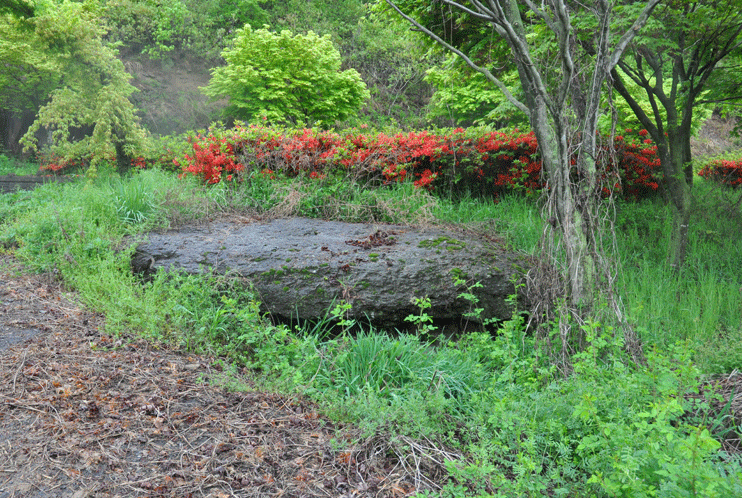Gwebawi (Cat Rock) was named after its it being in the position of cat from the Feng shui perspective while it faces the Pungsan Hong's family grave site at the mountain behind the Sunggok village 100 meters away, which has a rat shaped landform, . Cat usually preys rat but, but in this Feng shui conceptualized sphere cat rock cannot attack rat area because there is valley in between it and it is said that the cemetery in rat shaped area is good.
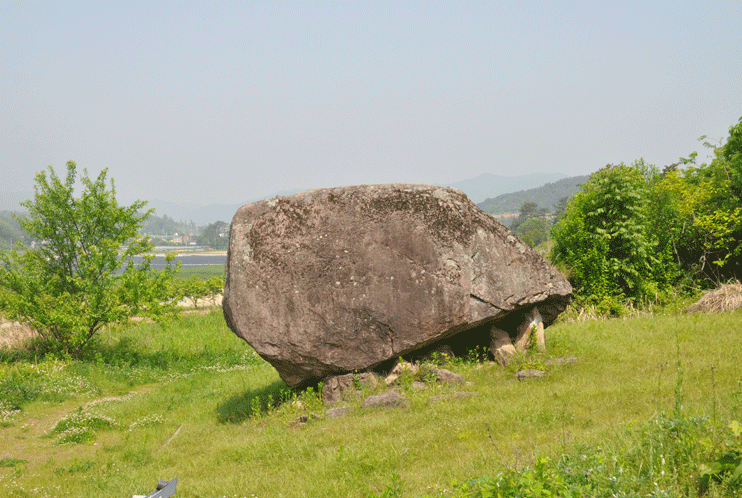
Gwancheongbawi stretches away like a wall on the middle of the slope of the Mt. Geonji besides a reservoir and there are many rocks scattered. These rocks face the south where Unjusa temple was located and there are many taless related to the Unjusa temple.
* One day, when Boseong governor passed by here to visit Naju past Bogeomjae hill and took a rest on the rock, a man approached and made a petition and he granted his request immediately. After that, it was named "Gwancheonbawi (government office rock)".
* A Buddhist monk drew Guksubawi over Gwancheonbawi and the reservoir of Sunggok village by Taoist magic to build 1,000 stupas of Unjusa temple, but the rocks stopped because the rooster crowed at dawn. That is why these rocks appear to have turned their faces towards the Unjusa temple.
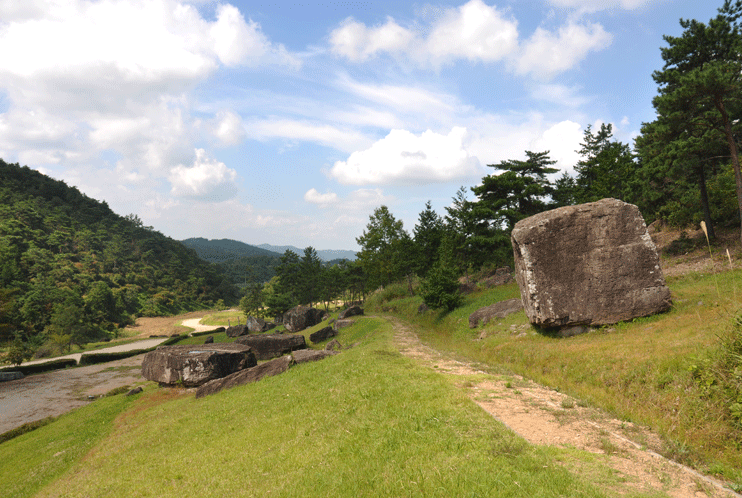
Many dolmens and rocks were scattered at the foot of a mountain along the road to the south between Hyosan-ri, Dogok and Daesin-ri, Dogok. It was named after the large dolmen which looks like the full moon on the ridge of the Bogeomjae hill to go to Naju from Boseong.
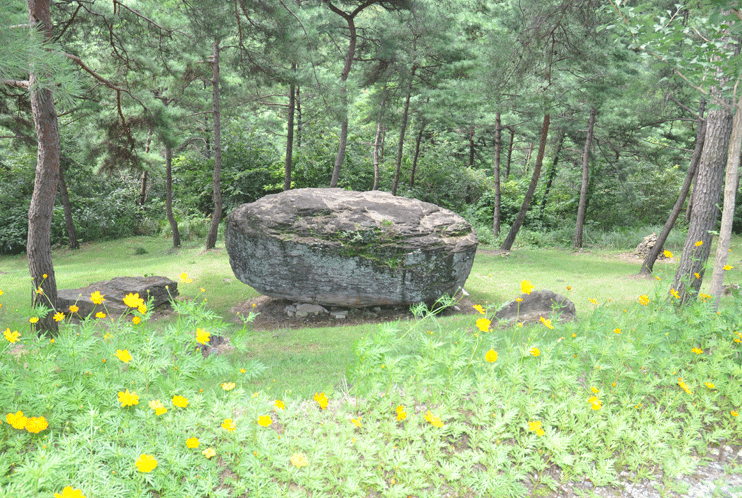
Boseongjae was also called Bogeumjae, Bogeomjae, Bogeomchi, or Bogeumchi. Jidong village people called it Bogeomjae and Mosan village people called it Boseongjae. Jidong village is on the east from Bogeomjae and Mosan village is on the west from it, which is the border of Chunyang-myeon and Dogok-myeon, Hwasun-gun.
Bogeomjae is an important route connecting Boseong to Naju. Thus there were pubs and inns in front of Jidong village for travelers.
* Jidong village people called Bogemjae literally translated from chinese characters 'treasure 寶, sword 칼, hill 峙’. In order to prove the origin of the name, village people claim that Bosengjae is more likely in that there were Baekmadeung(white horse back) and Janggunbawi(general rock) on the Bogeomjae hill of which context mathch with the word ‘sword rather than the name, Boseongjae. It is told that there were many thieves and robbers at Bogeomjae and commanders with swords riding on the white horses defeated robbers. Long ago, a tiger appeared at the Bogeomjae and Jeong Bong Hwa from Wonang-ri caught it by himself.
* Mosan village people called it Boseongjae or Boseongchi. 'Boseongjae" was named after the story that Boseong governor passed it to visit Naju and the name ‘Bosengcji’ emphasize the episode that the governor took a rest in the hill top on the way to Naju.

Some called Pingmaebawi Janggunbawi, but it was usually called Pingmaebawi. Letters “驪興閔氏世葬山 己巳三月日有司閔丙龍” (1929) were inscribed on surface of capstones and there was an oval hole of 40 cm in diameter in the upper part. Stories on Pingmaebawi were related to thousand Buddhas and thousand towers rather than dolmen.
* Mago grandma brought stones in her skirt to Unju village, but her skirt was ripped and the stones fallen from the skirt were called 'Pingmaebawi'. There was a hole on the Pingmaebawi. It is said said that when a woodcutter passed by it, threw a stone to it and the stone went into the hole, he got a son, but if not, he got a daughter.
* Mago grandma heard the rumor that thousand Buddhas and thousand towers were gathered at Unju village and went to the village with stones in her skirt, but the rooster crowed at dawn and threw away them and kicked them with her foot, so it was called Pingmaebawi. There was 'xx hole' on the Pingmaebawi. According to a legend, when village people passed by it, throw a stone into the hole by left hand and the stone went into the hole, they got a son, and if not, they got a daughter.
* There was a wooden box under the Pingmaebawi, which contained commander's clothes in it. Thus it was remembered as 'Janggunbawi'.
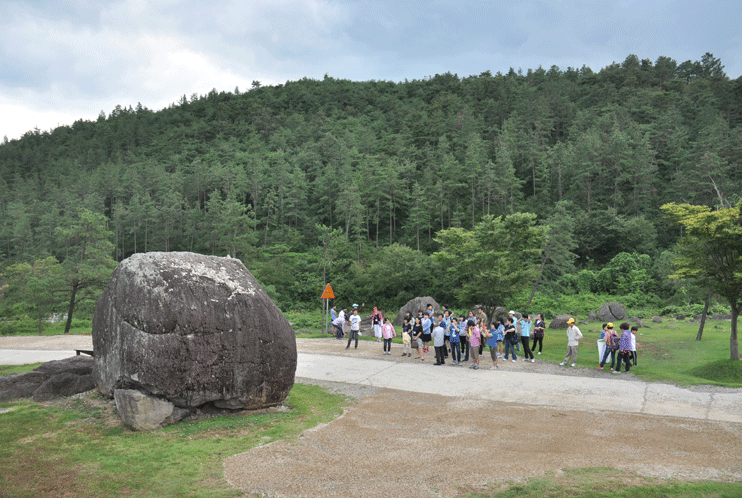
Gaksibawi was located at the top of the north mountain of Pingmaebawi and capstone sized rocks of dolmens were scattered around it and so it was assumed that it was used as dolmen quarry.
* Mago grandma heard the rumor that thousand Buddhas and thousand towers were gathered at Unju village and went to the village with stones in her skirt, but the rooster crowed at dawn and threw away them and kicked them with her foot. So it was called 'Gaksibawi' as the stones were from a woman's skirt.
* Gaksibawi was named after its shape like a girl and the place where it was located was 'Gaksibakgul'. Woodcutters often played under the Gaksibawi.
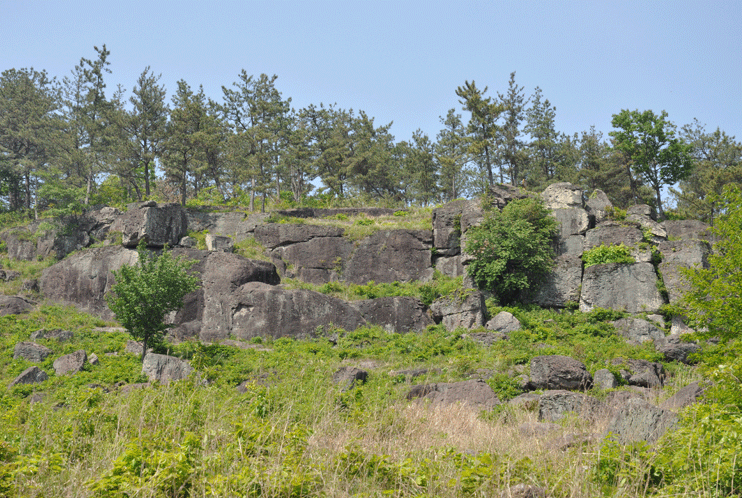
Gamtaebawi was named after its shape wearing Gat (Korean traditional hat made of bamboo and horsehair). Woodcutters played the games like horse riding or chuck-farthing under the Gamtaebawi.
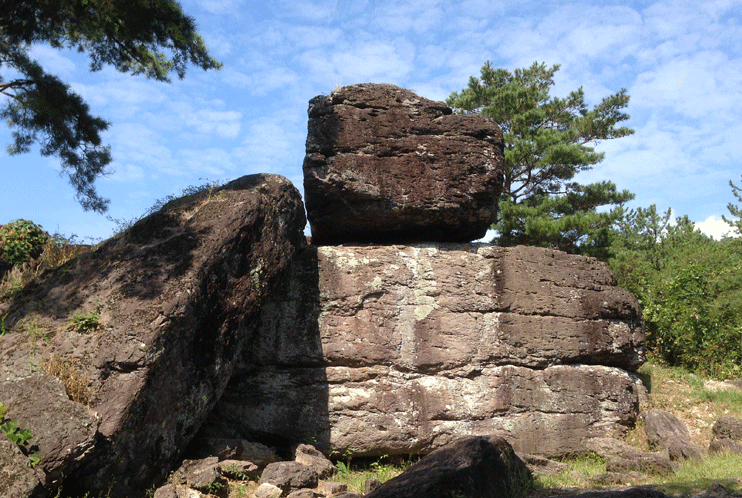
Gwendolbawi was the dolmen of 350 m in length, located at access road 40 m away from Jidong village. Its capstones were flat and it was good for people to sit and play. Village people called it 'Gwendolbawi'.
* There was a large pond in front of Gwendolbawi. So people sat on Gwendolbawi and did fishing. Village was named 'Motgol' or 'Jidong' (pond village) because it had the pond.
